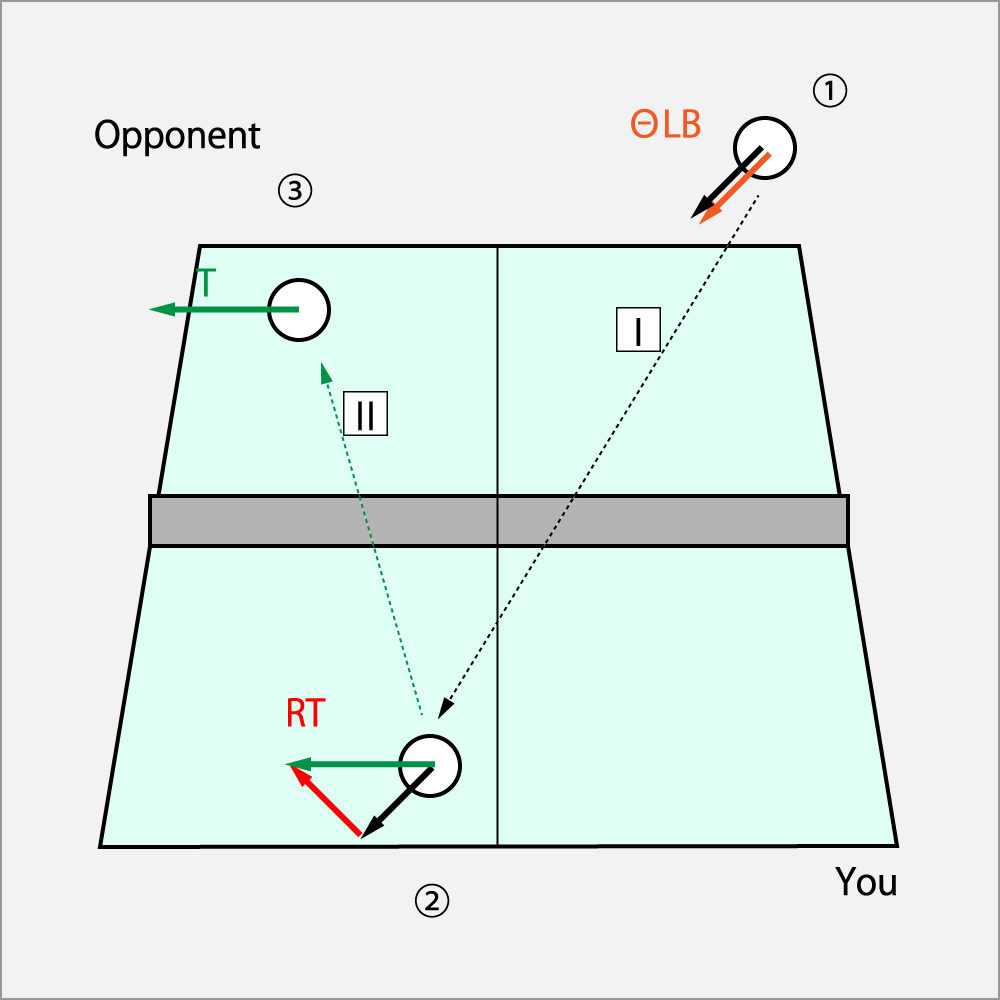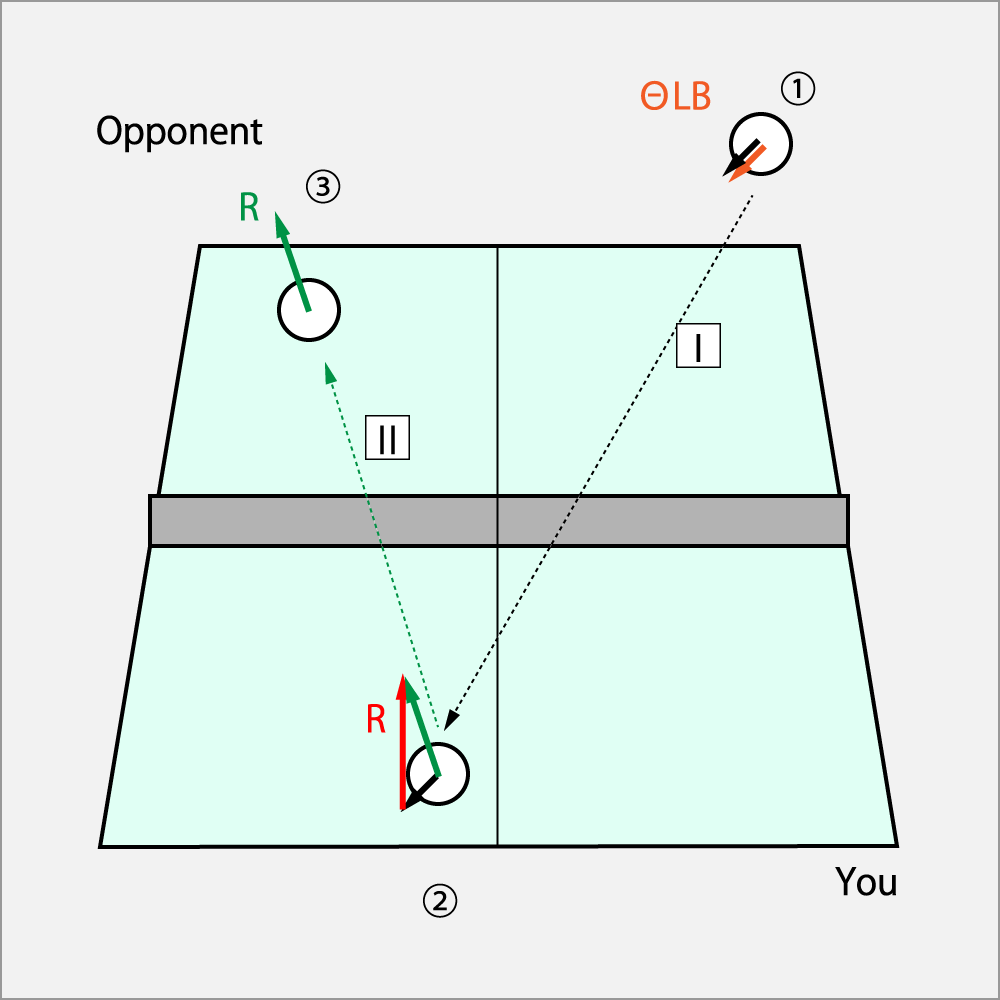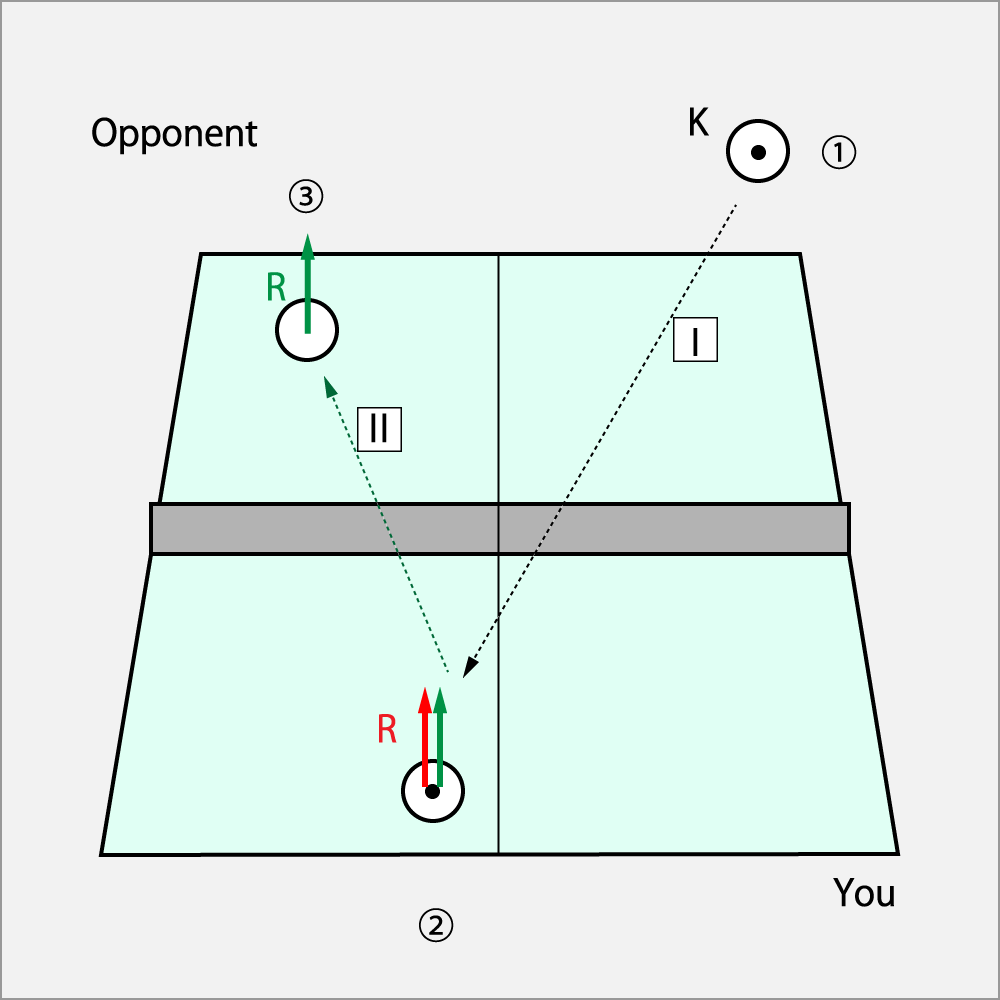Part 6. Tactics against Choppers
6.4. The Basic Tactics against Backhand Chops
The spin kinds by the opponent's chop swing using inverted rubbers at the backhand postion are almost ΘShoot-Cut, but if the opponet used the another kinds of rubber, the degree of its spin depends on the type of rubber. So, you will have to choose the additional spin corresponding to the spin of each rubber.
6.4.1. Drive Return against the Backhand Chop using Inverted Rubber
Since the return from the opponent's chop swing using Inverted rubber at the backhand positon results in a spin of ΘShoot⋅Cut, you can punch out with Drive to the fore side of the opponent by adding the Curve-Drive to it. This is a chance ball.

① The chopping motion by the backhand using Inverted rubber results in a spin of ΘShoot⋅Cut (ΘLB) on the Ⅰ.
② You add a spin of Curve⋅Drive (RT) to the spin on the Ⅰ in your court.
③ The ball will return with Drive (T) on the Ⅱ to the opponent' court.
Since the swing which you add the spin of Curve⋅Drive (RT) to the Shoot⋅Cut (LB) rubs the axis of ball, you can control the ball easily. It is a characteristic of this swing.
Swing example. Refer to 3.2.1. Offense from Your Back Swing.
6.4.2 Curve Return against the Backhand Chop using Pips-out Rubber
Since the return from the opponent's chop swing using Pips-out rubber at the backhand position results in a spin of ΘShoot⋅Cut like nearly Knuckle,
you can return the spin of Curve to the fore or back side of the opponent by adding the Curve to it.
The spin from you is significantly different of the Drive which the opponent was assuming,
since the rubber cannot use the spin counter-force of upward direction, the ball flight will be shorter at the next hitting,
the net will catch it. Or, when he could not control the spin, it will jump out from the table.
If his spin is strong, you return the ball as Drive to the opponent's fore side with adding the Curve⋅Drive.

① Th chopping motion by the backhand usint Pips-out rubber results in the spin of a weak ΘShoot⋅Cut (ΘLB) on the Ⅰ.
② You add a spin of Curve (R) to the spin on the Ⅰ in your court.
③ The ball will return with Curve (R) on the Ⅱ to the opponent's court.
The flying speed of Pips-out rubber is fast, and the reaction force is also high, so you will have to swing the racket head keeping stand, and take short contact time with the ball.
Swing example. Refer to 3.8.2. The swing against pips-out.
6.4.3 Curve Return against the Backhand Chop using Long-pips Rubber
Since the return from the opponent's chop swing of Pips-out rubber at the backhand position results in the Knuckle of few spin, you can return the spin of Curve to the fore or back side of opponent by adding the Curve to it. The spin from you is significantly different of the Drive which the opponent was assuming, since the rubber cannot be used to the spin counter-force of upward direction, the ball flight will be shorter at the next hitting, the net will catch it. Or, when he could not control the spin, it will jump out from the table.

① The chopping motion by the backhand using Long-pips rubber results in the Knuckle (K) of weak spin on the Ⅰ.
② You add a spin of Curve (R) to the spin on the Ⅰ in your court.
③ The ball will retrn with Curve (R) on the Ⅱ to the opponent's court.
The flying speed of Pips-out rubber is slow, and the reaction force is also low,
so you will have to swing the racket head keeping forward, take long contact time with the ball.
If the ball is too fly, you will tilt the racket head upright.
Swing example. Refer to 3.8.2. The swing against pips-out.